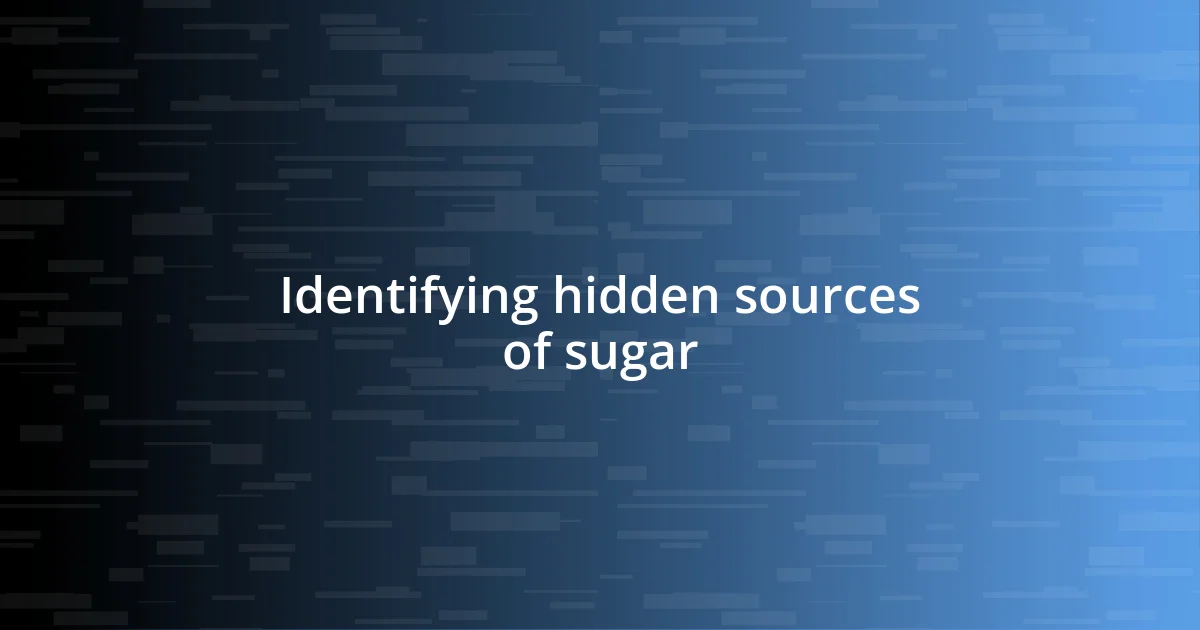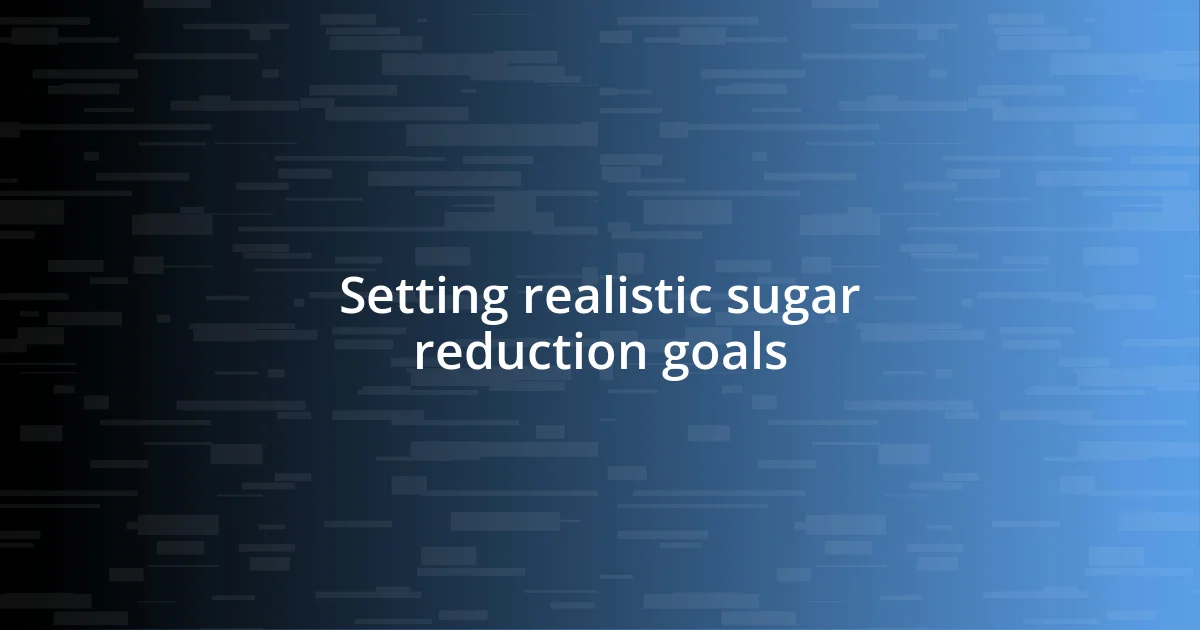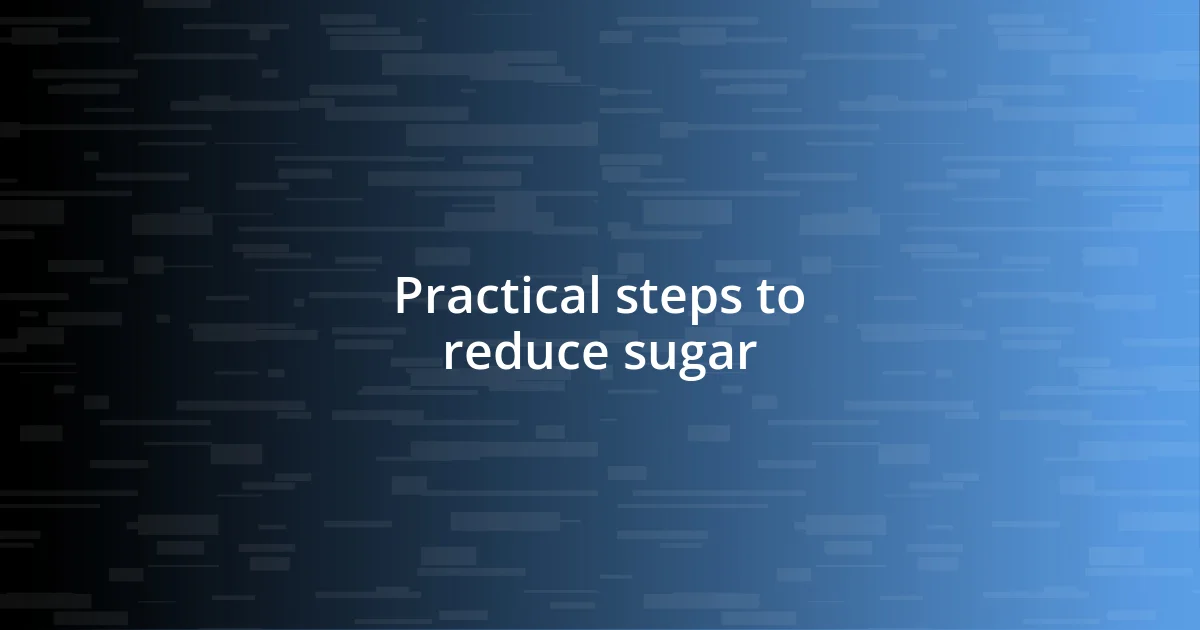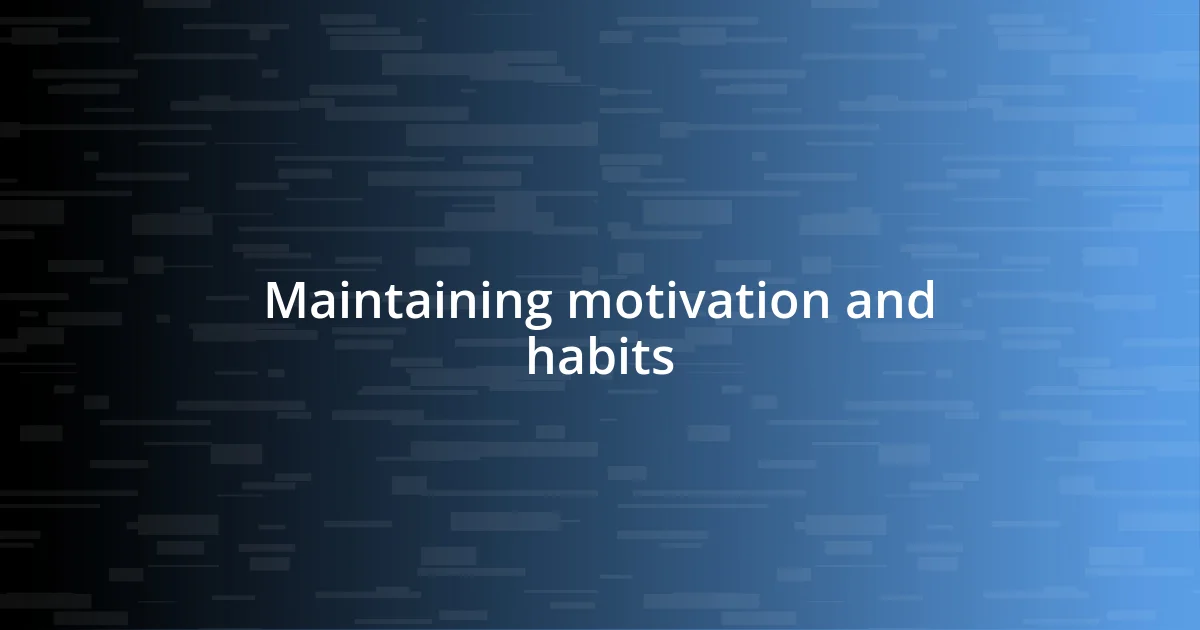Key takeaways:
- Excessive sugar intake is linked to serious health issues, including diabetes and heart disease, emphasizing the need for healthier choices and emotional awareness.
- Identifying hidden sugars in everyday foods like condiments and processed snacks is crucial for managing sugar intake and making informed dietary decisions.
- Setting realistic goals, tracking progress, and celebrating small successes are essential strategies for gradually reducing sugar consumption and staying motivated.

Understanding sugar’s impact on health
Sugar plays a complex role in our health, impacting everything from energy levels to mood. I remember a period when my cravings for sweets were relentless. Every afternoon, I’d hit a slump and reach for a sugary snack, only to feel even more fatigued afterward. It felt like a vicious cycle—could this be what many people experience?
Beyond just weight gain, excessive sugar intake has been linked to chronic conditions such as diabetes and heart disease. When I learned that my love for sugary treats could have such serious consequences, it really struck a chord. Emotional eating often masks deeper issues, and I realized sugar was my go-to comfort during stressful times. Have you ever noticed how a seemingly small treat can spark a wave of guilt afterward?
The emotional highs from sugar can be so enticing, yet they often come crashing down, leading to mood swings and irritability. I recall times when a sugary drink would give me a brief burst of energy, only to plummet into lethargy and grumpiness. It made me question: is that fleeting happiness worth the aftermath? Understanding sugar’s impact on health has been a revelation for me, pushing me toward healthier choices and a more balanced relationship with food.

Identifying hidden sources of sugar
Identifying hidden sugars can feel like detective work, especially when they’re subtly tucked away in everyday foods. I remember reviewing my pantry and being astonished at how many items contained sugar—items I never thought twice about, like salad dressings and canned soups. It was a real eye-opener to discover that many products marketed as “healthy” often pack a sugary punch.
As I dove deeper into reading labels, I found these hidden sources of sugar quite common:
– Condiments: Ketchup, BBQ sauce, and salad dressings often contain added sugars.
– Granola Bars: Seemingly healthy snacks that can be loaded with sugary fillings.
– Flavored Yogurt: Many fruit-flavored yogurts have more sugar than a candy bar.
– Breakfast Cereals: Even those claiming to be “whole grain” can hide high sugar content.
– Processed Foods: Many pre-packaged meals and snacks hide sugar under various names.
It’s a little unnerving to see how pervasive sugar is in our diets. I often feel a mix of frustration and motivation when I check food labels, knowing that awareness is the first step to taking control of my sugar intake.

Setting realistic sugar reduction goals
Setting realistic sugar reduction goals is essential to make sustainable changes. I remember when I first decided to cut back on sugar; I set an ambitious target of halving my intake overnight. However, it led to frustration and cravings that made sticking to my plan difficult. A more gradual approach allowed me to adjust without overwhelming myself, aligning my goals with a manageable pace.
When crafting your goals, consider starting small. For instance, I found that simply reducing the sugar in my coffee by half made a significant difference. Instead of expecting perfection, I learned to celebrate each small success. That felt rewarding, turning what initially seemed daunting into a series of achievable steps. What about you—have you started with a small change that felt monumental?
Always remember to track your progress. Keeping a food journal helped me stay accountable and recognize patterns. I was surprised to see how replacing sugary snacks with fruit or nuts not only satisfied my cravings but also provided lasting energy throughout the day. By focusing on realistic, incremental changes, I discovered a path that was not only healthier but also enjoyable.
| Goal | Example |
|---|---|
| Reduce sugary beverages | Swap soda for sparkling water |
| Limit dessert frequency | Start with one dessert per week |
| Substitute ingredients | Use mashed bananas in baking |

Creating a balanced meal plan
Creating a balanced meal plan requires a thoughtful mix of nutrients to keep your energy steady while minimizing sugar. I found it incredibly helpful to base my meals around colorful veggies, lean proteins, and whole grains. For instance, building a salad packed with greens, grilled chicken, and quinoa not only tastes great but also keeps my sugar cravings at bay.
I also encourage including healthy fats, like avocados or nuts, which add flavor and help you feel satisfied longer. The first time I swapped snacks like cookies for a handful of almonds, I was amazed by how much better I felt. Have you ever tried that shift? It’s interesting how a simple meal tweak can have such a positive effect on energy levels and mood.
Don’t forget to plan your meals ahead of time. When I started meal prepping on Sundays, I enjoyed the peace of mind that came with knowing healthy options were ready to go during each busy weekday. It’s a game-changer! Having balanced meals at your fingertips means you’re less likely to grab sugary treats out of convenience.

Utilizing sugar substitutes effectively
Utilizing sugar substitutes can be a game changer on your journey to reduce sugar intake. Personally, I found myself consistently reaching for stevia and erythritol. What surprised me was how seamlessly they blended into my favorite recipes, from coffee to baked goods. The thrill of baking a sugar-free chocolate cake with erythritol was exhilarating—it tasted just as sweet without the sugar rush. Have you discovered a sugar substitute that worked wonders in your cooking?
It’s worth noting that not all sugar substitutes are created equal. Some can leave a weird aftertaste, while others, like monk fruit sweetener, offer a delicious flavor profile without the calories. I remember trying a dish sweetened with agave syrup once; the taste was fantastic, but the outcome was unexpected—way too sweet and left me longing for balance! Have you encountered a sugar substitute that surprised you? Understanding the unique attributes of each sweetener can help you tailor your choices to fit your palate.
Lastly, moderation is key. While I enjoyed the freedom of using sugar substitutes, I learned not to rely on them entirely. There were moments when I overindulged in desserts made with substitutes and still felt the urge to binge on sugary treats. I remind myself that even substitutes should be enjoyed in reasonable portions. What about you—how do you find the right balance between satisfying your sweet tooth and staying mindful of your health?

Overcoming cravings and staying motivated
I can’t emphasize enough how important it is to recognize cravings as they come. Initially, I found myself battling a wave of desire for sugary snacks, especially in the afternoons. Instead of giving in, I learned to distract myself with a quick walk or a glass of water. It’s fascinating how a simple shift in activity can redirect my focus and quell that intense urge. Have you tried stepping away from the temptation? It could serve as a refreshing break.
One strategy that truly helped me stay motivated was setting small, achievable goals. When I successfully reduced my sugar intake for a week, I celebrated that accomplishment, even if it felt minor. I treated myself to a new workout outfit rather than a sugary treat. This approach created a rewarding cycle; each milestone reinforced my commitment while keeping my spirits high. What little victories motivate you to keep pushing forward?
Support from others also played a critical role in my journey. I joined a local online group focused on healthier eating habits, where members shared their struggles and wins. Hearing others’ stories and encouragement made the tough days feel a bit easier. Knowing that I wasn’t alone in this battle against sugar cravings was incredibly empowering. Have you found a community to lean on during your health journey? It can make all the difference!

Tracking progress and celebrating successes
Tracking my progress in reducing sugar intake felt like a journey where each step mattered. I remember jotting down my daily sugar consumption in a journal; it gave me a clear picture of my habits. Reviewing my entries, I felt a surge of pride when I noticed a consistent decline in my numbers—it’s truly rewarding to visualize such changes. Have you ever tried keeping track of your progress? It’s amazing what a few numbers can do for motivation.
Celebrating those little victories made all the difference for me. After a month of successfully cutting back, I treated myself to a fun outing with friends—no sweets involved! Instead, we explored a local farmer’s market, enjoying the fresh produce and vibrant atmosphere. It struck me how rewarding it felt to celebrate without food; that day was a testament to my new lifestyle. How do you acknowledge your achievements on your health journey? Finding alternatives to food rewards can be liberating.
I also found that sharing my successes with family and friends was incredibly uplifting. One day, I posted about reaching my sugar-reduction goal on social media, and the support I received was overwhelming. Each like and comment fueled my determination further, proving that connection matters. Have you shared your progress with others? Sometimes, a little encouragement from the people around us can ignite the fire we need to keep going.














